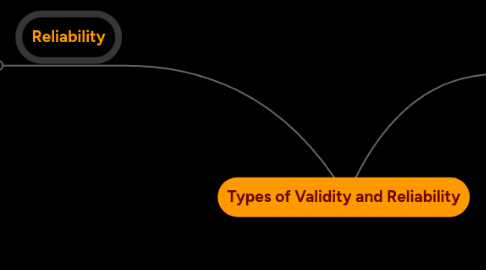Types of Validity and Reliability
da Lisa Tipton


1. Reliability
1.1. Test –retest estimates of reliability are obtained by administering the same test twice to the same group of individuals, with a small time interval between testing, and correlating the scores. The longer the time interval, the lower test –retest estimates will be.
1.2. Alternate-form estimates of reliability are obtained by administering two alternate or equivalent forms of a test to the same group and correlating their scores. The time interval between testings is as short as possible.
1.3. Internal consistency estimates of reliability fall into two general categories: split-half or odd–even estimates and item–total correlations, such as the Kuder –Richardson (KR) procedure. These estimates should be used only when the test measures a single or unitary trait
2. Validity
2.1. Content Validity: assessed by systematically comparing a test item within structional objectives to see if they match. Content validity evidence does not yield a numerical estimate of validity.
2.2. Criterion-related Validity: established by correlating test scores with an external standard or criterion to obtain a numerical estimate of validity evidence
2.2.1. Concurrent Validity evidence: Determined by correlating test scores with a criterion measure collected at the same time
2.2.2. Predictive Validity: Determined by correlating test scores with a criterion measure collected after a period of time has passed
